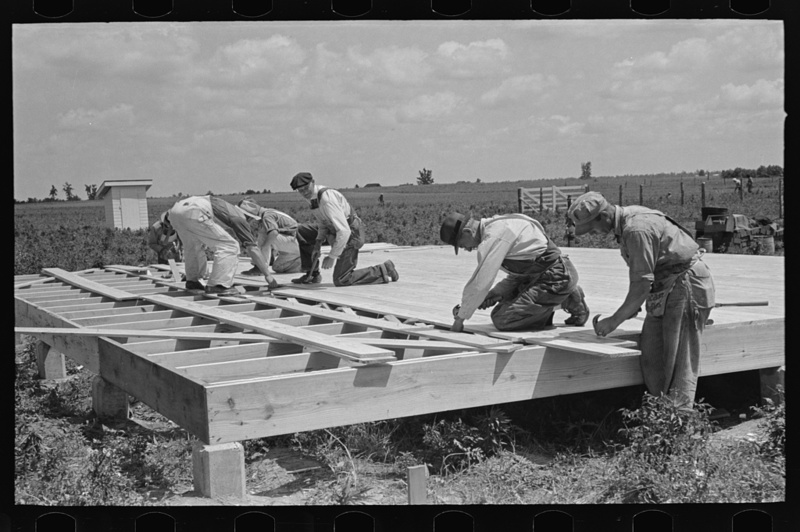You may have discovered a soft patch of carpet and searched how to replace water damaged subfloor. Doing regular inspections to monitor the condition of your subfloor helps you avoid more costly repairs in the future.
Perhaps you have more creaks in your flooring than usual. Damage to the subfloor often occurs due to exposure to excessive moisture. It could be because your house is damp, has a leak in your plumbing, or is cracked somehow.

Determining the best option for each circumstance depends on the relevant information, such as the type of flooring, level of damage, and the cost of repairs versus replacement. To help with water-damaged floors, follow these simple guidelines.
How do I determine if my subfloor needs to be replaced?
An early indicator is when your floors have sunken. A quiet place underneath carpet or wood flooring indicates that the floor panels or wood have deteriorated. You would have to replace damaged portions of the subfloor to stop the rot from growing.
Moreover, it can also be when the floor squeaks loudly. Areas of wood or carpet that feel softer than the surrounding area can weaken the floor panels below. It may not be essential to replace the entire subfloor, but it’s critical to replace any damaged pieces to prevent further deterioration.
It can also be when a ceiling has leaks. While it is not your subfloor’s responsibility if the ceiling leaks, you should understand that your subfloor was not at fault either.
If this is a leak, it could indicate that you have a gradual leak in your home. Because plywood and OSB (Oriented strand board) both absorb moisture, they are effectively wet through even before the water gets to the ceiling.
Replacing Water Damaged Subfloor
Step #1. Remove the floor vent
Use a screwdriver to remove a floor vent. Begin by looking inside your home and examining the cross-section of your present flooring.
When cutting steel, position the blade of a circular saw to the desired thickness. If there is an overlay, be sure to measure it. Make sure you turn on the blade and set it to cut 1 inch deep if you do not have a vent.
Step #2. Draw a rectangular or square
Use a straightedge that is at least 6 inches longer than the damaged area to draw a rectangular or square design. When joists support subflooring, it is essential. If the cutout pattern does not span the joint or seam, use the pattern as close as possible.
Step #3. Remove the nails
Using a hammer, tap the end of a pry bar into any crack or seam. Extend the nail by slightly prying the portions. It would help if you knocked down any exposed or protruding nails with a claw hammer.
If your nails break off, use a hammer to pound them into place or apply diagonal pliers to pull them out. Keep probing, lifting, and removing the portion or sections. Use the sections to nudge difficult nails into place.
Step #4. Measure the damaged area
Measure all sides of the marked area, even those that are unsupported. Cut two-by-four studs to the measurements and then install them with a miter saw. You can use a drill or driver with 3-inch screws to fasten the subfloor to the studs, which should flush the sides of the joists to ensure proper support.
To account for a 1/8-inch space between the existing subfloor and the new subfloor, measure the cutting area and subtract 1/8 inch from all four sides. If the previous flooring or overlay is removed, cut the new subfloor and any subsequent overlay with a straightedge and circular saw.
The item you are removing should be removed using the same material and thickness as was used in the first step. You should always use a jigsaw when cutting curved pieces. Lay down the new underlayment in the hollowed-out area.
Step #5. Install new subfloor
Attach the subfloor to the joists and blocks using 2-inch screws. Use 112-inch deck screws to secure the overlay to the subfloor.
Draw out 24-36-inch pieces to replace the subfloor. Circular saw the portions through.
A reciprocating saw can cut along the wall where a circular saw cannot. Pry the parts out.
Insert the new subfloor on the joists, centered, with the edges and joints over the joists. If required, split the difference to support two parts.
Attach the subfloor to the joists with 2-inch screws. If applicable, attach the overlay using 1 1/2-inch deck screws.
Does homeowners insurance cover the subfloor?
If your entire subfloor has to be replaced due to water damage, your homeowners’ insurance will typically cover it. Find out if you should do the work yourself or hire someone to do it for you, as well as the types of coverage your insurance will cover.
Conclusion
You can now follow these steps to know how to replace water damaged subfloor. Make sure to ask for help in case you need a hand.
